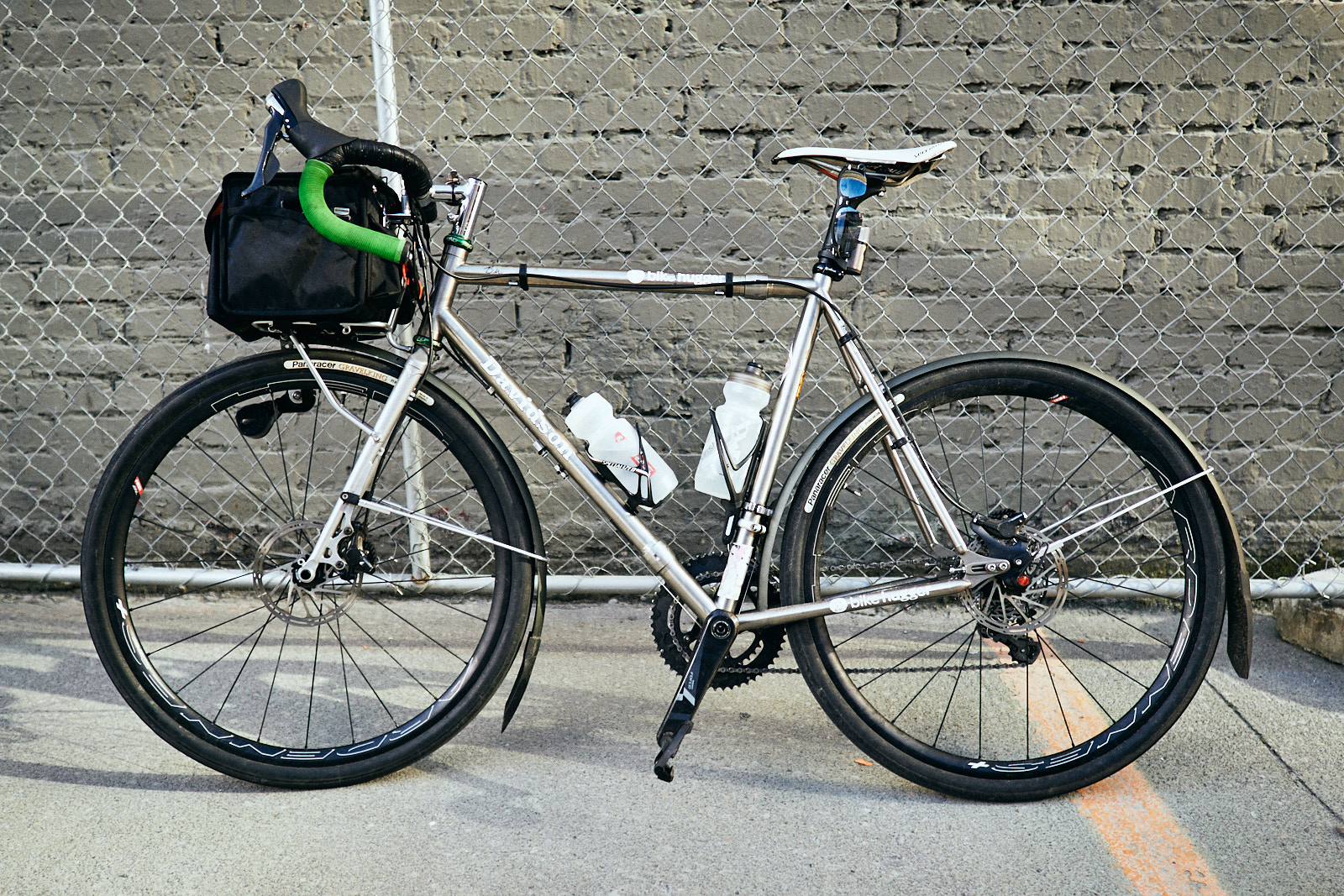The Modal Bicycle Concept Explained
The concept of the modal travel bike is to have a bike that is thoughtfully designed and equipped so that it could be run as a regular road bike or quickly converted into a single-speed road bike with minimal fuss and fit into an airline-friendly case for travel.

The S&S couplings allow the frame to separate into 2 pieces and fit into the travel case. The case just skims in under the airline surcharge. Once you put the frame in the case, you choose the “mode” of the bike and throw in the associated “modal” components.
The regular road mode would be ideal for cycling vacations when the itinerary is centered on cycling. Gonna ride the road to the sun in Hawaii? You’re gonna want all the gears.
But if you are going on a business trip to NYC or Berlin, you just want a bike that is quick and simple to build and pack. You might not have time to even leave city limits, assuming you knew where the best cycling route (which you probably don’t). Then you bring the bike in single-speed mode, and enjoy a quick break from tedious activites or enjoy freedom in new surroundings.
The core of the Modal Travel Bike is a frame with S&S couplings that is somewhat sporty in design. The modes are determined by which “modal” parts are added (chainrings, rear wheel, handlebar/lever, and chain). Packing the bike requires the same amount of disassembly as switching the modal parts, so you could use the bike as your everyday road bike while switching the bike to single-speed is the same operation as packing it: you are just tossing in a different set of parts for when you build the bike at you destination.
On the Bike Hugger Modal™ bike, I’m spec’ing vertical dropouts with a chain-tensioner for single-speed use, though my own bike by sycip has track dropouts that have a derailleur hanger. My dropouts make wheel changes awkward. However, my bike is not only fixed-gear compatible but also fully track legal if you removed the brakes. Byron will never run fixed, so I chose vertical dropouts for his bike. If we chose to develop this modal bike further, we will have to decide what type of dropout to use on a production basis.
I will be using a steel fork with lowrider mounts in place of the original carbon fork so that i can run front panniers and tour Japan. Thus, the fork is also a modal component.
My own bike has 4 handlebar sets:
- drop bar with sti for road race/touring
- drop bar with standard levers for fixed gear riding
- drop bar clean for mass-start track riding
- aero and base bar for time trials (road fixed) or pursuits track
2 hollowtech cranks (use same BB)
- triple crank for touring
- road crank for road racing with double rings or for track/fixed with single ring
2 rear wheels:
- hugi 240 cassette hub for road race/touring
- phil wood 130mm spaced track hub
2 forks:
- carbon look fork
- custom steel sycip for with lowrider mounts (chris king headsets make fork changes a clean operation since the bearings don’t fall out when you take the fork off)
2 sets of derailleurs:
- Dura Ace double derailleurs for racing
- Tiagra triple derailleurs for touring
2 chains
- wipperman 10speed chain with masterlink
- wipperman Weisstern track chain with masterlink
With the use of Ritchey Cable Splitters and multiple front brakes, I don’t need to tune derailleurs or replace cables when I convert the bike from one mode to another. It takes me a maximum of 30-40 minutes to convert the bike from one mode to another or to pack the bike. As a fixed gear, I have regularly packed the bike in 25 minutes and assembled it in 15 minutes. Granted, I’m a bicycle mechanic, but a halfway competent person should take no more than twice as long to do the same.
If it takes so little time to assemble the bike fully geared, why would one want to take it as a single-speed/fixed? Because the single-speed parts are stronger and less vulnerable to damage in transit. You never need to worry about something going wrong with a single-speed when you only have one afternoon to ride in some out there location. It’s easier to pack since there are less components to carefully arrange in the travel case, and the bike is quicker to assemble. A single-speed is just less to worry about, and having a bike on a trip should relieve stress rather than add to it.
I’ve got my bike so thought out that I only need 5 tools (single-use, not multi-tools) to assemble the bike in any configuration.
What would really make my modal concept perfect would be a true 144mm bcd track crank made to fit an external bearing bb like the shimano’s hollowtech. As it stands, I cannot use real track rings because dura ace crank is 130mm bcd.
Hello, sram corporation? wanna sell me one of those truvativ “omnium” track cranks? I’ll be your best friend! I need a 165mm crank, thank you very much.